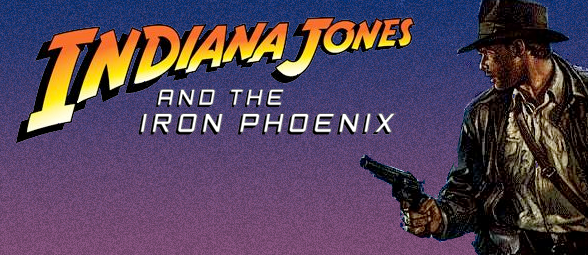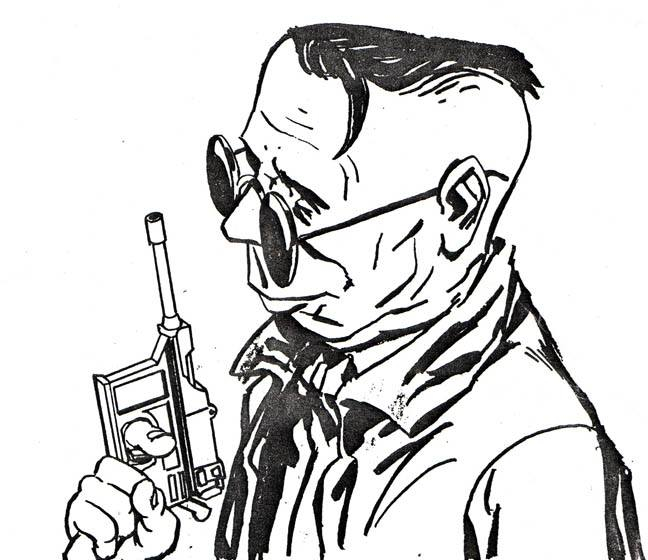- Page 1 After Fate of Atlantis
- Page 2 A Post-War Indy
- Page 3 Design Interrupted
- Page 4 Programmers and Palettes Stretched Thin
- Page 5 Blame Canada
- Page 6 "Our situation has not improved."
- Page 7 A Comic Consolation Prize
- Page 8 "It belongs in a museum!"
- Page 9 Resources, Sources, and Thanks
- Page 10 But wait! There's more.
Articles

Indiana Jones and the Iron Phoenix: The Lost Sequel to Fate of Atlantis A Post-War Indy
Development began around 1993 with a small team that included up-and-coming project leader Joe Pinney (who would go on to work at Telltale on such games as Tales of Monkey Island, Sam & Max: The Devil’s Playhouse and Jurassic Park: The Game), fellow project lead and background artist William 'Bill' Stoneham, and lead animator Anson Jew. Fate of Atlantis project leader Hal Barwood opted to focus his attention on other projects, but nevertheless supported Iron Phoenix as a “story consultant” rather than an active member of the team.

Any graphic adventure project must begin with the story, and the yarn Pinney and Barwood devised took place in 1947, depicting an older, post-war Indy, a Soviet presence, and a finale set in South America. Without further context, one sees superficial similarities to the eventual fourth Indiana Jones film, and in fact some drafts of that movie took place in 1947 to better embrace the Roswell connection. (Ultimately, Crystal Skull would take place in 1957 to explicitly acknowledge the nineteen years separating it from the release of Last Crusade, set in 1938).
But Iron Phoenix had nary an alien in sight. As its eventual co-project leader Aric Wilmunder points out, 1947 was a remarkable time in history no matter how you slice it:
The Nazi’s were defeated. The US had the bomb, and thought the science behind it was somehow a secret, but stockpiling of the weapons didn’t really get going until the 1950’s In a few short years since the war, US and Soviet forces that were allied against Germany were now entering the first part of what would become the cold war.
The Nuremberg trials had ended, with Goering committing suicide, but many Nazi’s went underground while others escaped to South America. Many German scientists along with their technologies had been rushed out of the country including von Braun who would had designed and built the V2 rockets that were fired on London and went on to build the Saturn V and put men on the moon.
There is a brief time where if the Nazi’s had the Philosopher’s Stone, could use it to bring back Hitler, and also refine a uranium rich ore like pitchblende into explosive grade atomics, they could have stuck DC, London, Moscow, and begun their 1000-year reich. This period was already an interesting turning point in history, and throw in the right MacGuffin, and it would have turned even farther.
- Aric Wilmunder
Indeed, the Philospher’s Stone was selected as the artifact Indy’s quest would be based around (this predated Harry Potter by several years). Sought by post-war Nazis hiding out in Europe and Bolivia, the stone is believed capable of resurrecting the Führer himself. The mastermind behind this effort is the evil Matthias Jäger, a pseudo-scientist with a bloated resume of wartime atrocities. Anson Jew recalls this arch-villain was “kind of similar to Major Toht from Raiders of the Lost Ark, although probably a little tougher.”

Before Indy gets caught up in the mayhem, these Nazis are being pursued by ruthless Soviet major and Nazi hunter Nadia Kirov, whose vendetta is personal – kin of hers suffered at the hands of Jäger's brutal concentration camp experiments. Indy gets involved when he arrives in war-torn Berlin (serving as a sort of home base throughout the game) to recover relics.
Pre-eminent archaeologist that he is, Indy winds up discovering a scroll known as The Key of Solomon the King in a ruined monastery tower. Sounding similar to Fate’s Lost Dialogue of Plato, the scroll contains clues to the locations of the stone’s three pieces. Initially his foil, Kirov eventually joins forces with the intrepid adventurer in a race against the Nazis for their prize. Their quest ultimately leads to South America, where Indy must use his wits and fists to prevent nothing less than the restoration of the Third Reich.
So yeah, that sounds pretty awesome, and by all accounts the team plugged away on the project eagerly in this early phase. Problems always arise with game development, however, and in the case of Iron Phoenix they arrived early and often.